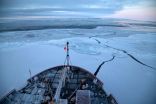(Press-News.org) The environmental movement is making a difference - nudging greenhouse gas emissions down in states with strong green voices, according to a Michigan State University (MSU) study.
Social scientist Thomas Dietz and Kenneth Frank, MSU Foundation professor of sociometrics, have teamed up to find a way to tell if a state jumping on the environmental bandwagon can mitigate other human factors - population growth and economic affluence - known to hurt the environment.
"We've used new methods developed over the years and new innovations Ken has developed to add in the politics - and find that politics and environmentalism can mediate some environmental impact," Dietz said. "Environmentalism seems to influence policies and how well policies that are in place are actually implemented and it also influences individual behavior and the choices people make."
The study, in this week's Proceedings of the National Academy of Sciences, shows a state-level win for environmental activism that hasn't been apparent on a national scale.
The authors compared greenhouse gas emissions between all 50 U.S. states and within each state over time going back to 1990, and determined how emissions correlated with population, gross state product per capita, employment rate, and environmentalism. They calculated environmentalism by the environmental voting record of a state's congressional delegation, as rated by the League of Conservation Voters.
The combined influences of population and affluence have been regarded as the core of environmental stress - and have tended to guarantee an annual increase in carbon dioxide emissions. But the paper "Political influences on greenhouse gas emissions from U.S. states" adds what the MSU researchers say is an important layer to understanding human impact on climate change. They show that a 1 percent increase in environmentalism tends to reduce emissions by more than enough to compensate for the typical annual increase in emissions.
"Efforts to mitigate emissions take a variety of forms at the state and local level and may have substantial impact even in the absence of a unified national policy," the paper notes. "Existing regulations can be applied strictly or less stringently, and programs can be pursued enthusiastically or given a low priority. Even without formal policy and programs, the importance of reducing emissions can be widely accepted by individuals and organizations and result in actions that have substantial impact."
This breakdown showed that certain states, such as New York for example, that would expected to see its increasing population and affluence bring along significantly higher carbon dioxide emissions instead saw those emissions fall thanks to politics that favored environmental protections.
Dietz and Frank offer a new way of understanding what drives humans' impact on the environment, one that both see as a first step at turning up the sensitivity of understanding how people are players in the environment's health.
Frank's sensitivity analysis parceled out whether variables comparable to a state's liberal or conservative leanings, political affiliation or number of women in the legislature, could be tipping the scales they were attributing to environmental activism.
"When doing this sensitivity analysis, we ask what it would it take to knock our results over - a feather, an arm or a sledgehammer, and these are pretty close to sledgehammer results," Frank said. "We're finding that 44 percent of our data would have to be due to bias to shake this."
Dietz notes that understanding activism is a strong first step to understanding many kinds of environmental stresses, such as air pollution.
"We've always said this is laying the groundwork for more study. Ken came in with subtle ways to look at how the world works," Dietz said. "This is just the start of a conversation."
INFORMATION:
Both Dietz, a professor of sociology, environmental science and policy, and Frank are members of MSU's Center for Systems Integration and Sustainability. Other authors are MSU graduate student researchers Cameron Whitley and Jennifer Kelly, and Rachel Kelly. MSU AgBioResearch supported the research.
Using Twitter and Google search trend data in the wake of the very limited U.S. Ebola outbreak of October 2014, a team of researchers from Arizona State University, Purdue University and Oregon State University have found that news media is extraordinarily effective in creating public panic.
Because only five people were ultimately infected yet Ebola dominated the U.S. media in the weeks after the first imported case, the researchers set out to determine mass media's impact on people's behavior on social media.
"Social media data have been suggested as a way to track ...
Vitamin D plays an important part in the human immune response and deficiency can leave individuals less able to fight infections like HIV-1. Now an international team of researchers has found that high-dose vitamin D supplementation can reverse the deficiency and also improve immune response.
"Vitamin D may be a simple, cost-effective intervention, particularly in resource-poor settings, to reduce HIV-1 risk and disease progression," the researchers report in today's (June 15) online issue of Proceedings of the National Academy of Sciences.
The researchers looked at ...
MAYWOOD, IL - Poverty is known to be a strong risk factor for end-stage kidney disease. Now, a first of-its-kind study has found that the association between poverty and kidney disease changes over time.
The percentage of adults beginning kidney dialysis who lived in zip codes with high poverty rates increased from 27.4 percent during the 1995-2004 time period to 34 percent in 2005-2010.
The study, by corresponding author Holly Kramer, MD, MPH and colleagues at Loyola University Chicago Stritch School of Medicine, is published in the journal Hemodialysis International.
Researchers ...
For the last decade, astronomers have observed curious "hotspots" on Saturn's poles. In 2008, NASA's Cassini spacecraft beamed back close-up images of these hotspots, revealing them to be immense cyclones, each as wide as the Earth. Scientists estimate that Saturn's cyclones may whip up 300 mph winds, and likely have been churning for years.
While cyclones on Earth are fueled by the heat and moisture of the oceans, no such bodies of water exist on Saturn. What, then, could be causing such powerful, long-lasting storms?
In a paper published today in the journal Nature ...
New research by NOAA, University of Alaska, and Woods Hole Oceanographic Institution in the journal Oceanography shows that surface waters of the Chukchi and Beaufort seas could reach levels of acidity that threaten the ability of animals to build and maintain their shells by 2030, with the Bering Sea reaching this level of acidity by 2044.
"Our research shows that within 15 years, the chemistry of these waters may no longer be saturated with enough calcium carbonate for a number of animals from tiny sea snails to Alaska King crabs to construct and maintain their shells ...
AUSTIN, Texas -- Researchers in the Cockrell School of Engineering at The University of Texas at Austin have developed a groundbreaking new energy-absorbing structure to better withstand blunt and ballistic impact. The technology, called negative stiffness (NS) honeycombs, can be integrated into car bumpers, military and athletic helmets and other protective hardware.
The technology could have major implications for the design and production of future vehicles and military gear to improve safety.
The new NS honeycomb structures are able to provide repeated protection ...
ALEXANDRIA VA, JUNE 15, 2015 - A statistical analysis of poll performance in battleground states over the last three presidential elections shows polling firms produced estimates that were fairly accurate in 2004 and 2008, but underestimated support for President Obama in 2012, a new article reports.
The article's authors--Ole J. Forsberg and Mark E. Payton, professors in the department of statistics at Oklahoma State University--believe the culprit for bad polling in the 2012 election may have roots in "outdated and possibly flawed sampling methodology" that resulted ...
SAN FRANCISCO--For many generations, Bedouin people living in the Abu Dabbab area on the Egyptian Red Sea coast have heard distinct noises--like the rumbling of a quarry blast or cannon shot--accompanying small earthquakes in the region. Now, a new study published in the Bulletin of the Seismological Society of America offers an explanation for this uniquely noisy seismic event.
Seismic activity in the area of the Egyptian seaside resort Abu Dabbab may be caused by an active fault that lays below a 10-kilometer thick block of old, now rigid igneous rock. The surface of ...
(Philadelphia, PA) - It's long been known that scratching evokes a rewarding and pleasurable sensation in patients with chronic itch. Now, researchers in the Department of Dermatology and Temple Itch Center at Temple University School of Medicine (TUSM) may be closer to understanding why.
Using advanced fMRI imaging, the researchers looked at activity in the brain while 10 chronic itch patients and 10 healthy subjects scratched an itch. They found that areas of the brain involved in motor control and reward processing were more activated in chronic itch patients while ...
There is little information about bee populations in Alaska, where native bee pollination is critical to the maintenance of subarctic ecosystems. A team from the University of Alaska Fairbanks and the USDA have now completed a two-year study on bumble bees in agricultural areas in the region. The research was published in the Biodiversity Data Journal.
Pollination is one of the most fundamental processes sustaining agricultural production and natural ecosystems. While decrease in bee populations is a common concern, most press coverage has been directed towards Colony ...

